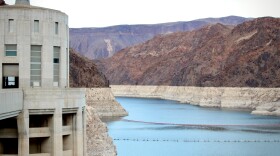-
A new document from the federal government shows how some pressure is lifted from states that use water from the Colorado River until 2026, but bigger challenges lie ahead.
-
A report from the Bureau of Reclamation shows some consensus among water stakeholders but highlights lingering divisions among a diverse pool of water users.
-
The latest study from the Bureau of Reclamation shows how a wet winter in 2023 helped boost Lake Powell and Colorado River water supplies. But experts say more cuts to demand for the water supply are needed.
-
After a Colorado River conservation agreement between California, Arizona and Nevada, states and tribes are turning their attention to a new round of pre-2026 negotiations.
-
A group of congress members from Colorado, Utah, New Mexico, Nevada, California and Arizona is gathering to talk about the Colorado River and rally funding for Western water projects.
-
California officials say the state was not consulted as others that use water from the Colorado River drafted a six-state agreement to propose cutbacks. Representatives from Arizona, Utah and Colorado disagree.
-
Colorado, Utah, Wyoming and New Mexico are asking the Bureau of Reclamation to pause water releases at Flaming Gorge Reservoir, which has been used to help prop up Lake Powell.
-
Lake Powell is shrinking as climate change and steady demand cause trouble for states that rely on the Colorado River. The Bureau of Reclamation is scrambling to keep hydropower generators running in Glen Canyon Dam.
-
States that use water from the Colorado River are facing a deadline from the Bureau of Reclamation. If they are unable to agree on cutbacks, the federal government could force use reductions as part of a Supplemental Environmental Impact Statement, or SEIS.
-
The Bureau of Reclamation filed a Notice of Intent to propose changes to the amount of water released from Lake Powell and Lake Mead.

Play Live Radio
Next Up:
0:00
0:00
Available On Air Stations










